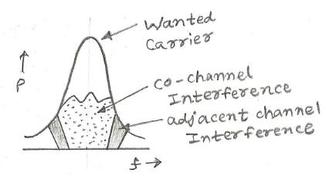Understanding Electrical Length in RF/Microwave Systems
Explanation of electrical length in RF/microwave systems, defining its relationship to physical length, wavelength, and time delay. Includes a glossary of common related terms.
Advertisement
Explanation of electrical length in RF/microwave systems, defining its relationship to physical length, wavelength, and time delay. Includes a glossary of common related terms.

Explore interference types like ISI, co-channel, and adjacent channel interference. Learn about their causes, effects, and mitigation techniques for improved communication systems.

Learn about ionospheric bending, a radio frequency propagation phenomenon used in mobile communication, where signals are reflected back to Earth due to refraction in the ionosphere.

Learn about the D, E, F1, and F2 layers of the ionosphere and their impact on radio wave propagation. Understand how solar radiation and other factors influence each layer.

Explore IQ vectors in signal processing, representing signals using in-phase (I) and quadrature (Q) components. Learn about visualizing, generating (VSG), and analyzing (VSA) IQ data.
Explore microwave frequencies (1 GHz - 300 GHz), their bands, applications in communication, radar, medicine, and the benefits they offer in modern technology.
Modulation is key to transmitting data by varying a carrier signal's properties. Learn about analog, digital, and optical modulation techniques and their applications.
An overview of different types of electrical noise, including manmade, atmospheric, extra-terrestrial, and internal noise, along with their characteristics and mitigation techniques.

Learn about Ohm's Law, its formula (V=IR), and the difference between ohmic and non-ohmic conductors. Explore examples and related concepts in electronics.

Explore the 1dB compression point (P1dB) and third-order intercept point (TOI) in RF design. Learn formulas, derivations, and practical significance for system performance.

Learn about receiver blocking, where a strong interfering signal reduces receiver sensitivity, causing the desired signal to appear weaker. Explore testing and mitigation techniques.
Learn the differences between MTBF, MTTR, MTTF, and FIT – key reliability metrics for evaluating product and system dependability.

Explore resonance in AC circuits with capacitors and inductors. Learn about series and parallel resonance, resonant frequency, Q factor, and applications.

Explore the world of RF connections, from coaxial cables to wireless communication. Learn about their various types, advantages, disadvantages, and applications.
RF enclosure boxes (RF shield boxes) isolate sensitive electronic devices from unwanted radio frequency interference, ensuring signal integrity and optimal device function.

Explore RF frequency jamming techniques, how jammers work, and their applications in security and defense. Learn about signal disruption methods and mitigation strategies.

Explore the fundamentals of radio frequency (RF) signals, their characteristics, and applications in wireless communication systems.
Sensor sensitivity determines how well a sensor responds to changes in the quantity it's measuring. It impacts the resolution and precision of measurements.
Learn about Short Range Devices (SRDs), their applications, frequency bands, and key considerations for selection and usage in various wireless systems.

Explore the fundamentals of signal integrity in PCB design, its benefits in addressing signal quality, crosstalk, and EMI challenges in VLSI circuits.
Advertisement